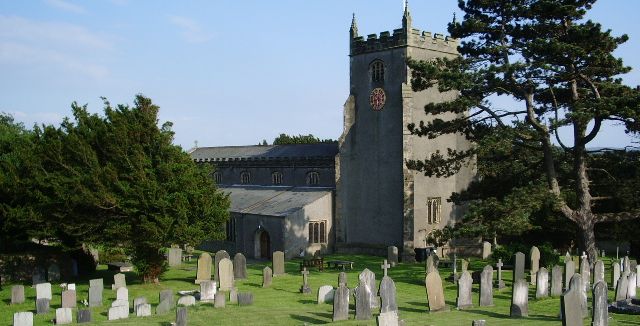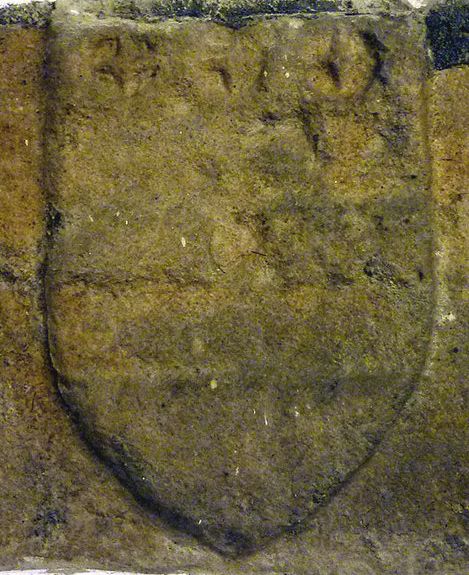Authors:
Historic Era:
Historic Theme:
Subject:
Summer 2022 | Volume 67, Issue 3


Authors:
Historic Era:
Historic Theme:
Subject:
Summer 2022 | Volume 67, Issue 3


Weathered and time-worn, the detail in the crest’s carving can only just be discerned: the faint outline of a shield-like shape within which sit some horizontal bars and the shadow of what once must have been three stars. Now safely ensconced in the interior of St. Oswald’s – a 15th century church in the village of Warton, north Lancashire – the crest had originally been attached to the exterior of the tower and had felt the full force of the wind and rain that barrels in from the Irish Sea.
Sometime in the early 19th century, it was covered over with plaster, only to be rediscovered by workmen conducting repairs in the 1880s. For those who were chipping away with hammer and chisel, it must have been a remarkable moment; here was the crest of a local family of substance, one which had clearly had the money and power to carve their emblem into a medieval parish church.
And the name of this family, these one-time denizens of the rugged English north country? Washington.
Today, the keen-eyed visitor will discover that there are in fact several places in Warton that record a local connection to the family of George Washington, the man who in 1789 became the first president of the United States of America. In the churchyard, for instance, lies another – the grave of Thomas and Elizabeth Washington, the last of that name to be buried in the shadow of St. Oswald’s.
A walk down the village’s main street reveals the local pub (The George Washington, of course) as well as “Washington House,” a 17th century property at which the family had once lived. It's a fascinating architectural legacy of a now-distant transatlantic connection.
Warton is by no means the only British community featuring markers and memorials to the Washingtons. Others can be found at Washington Old Hall in County Durham, at Purleigh and Maldon in Essex, and at Sulgrave Manor in Northamptonshire (the latter is another of the Washington ancestral homes).
courtesy of Karl and Ali, Washington House, and Cathy Cox." data-entity-type="file" data-entity-uuid="6c55a358-a379-4d08-b57a-933d77d330cf" height="289" src="https://www.americanheritage.com/sites/default/files/inline-images/Washington%20homes_1.jpg" width="807" loading="lazy">
And it’s not just the Washingtons. In fact, the interested traveler can find among Britain’s towns and villages numerous locations suggestive of the deep historical connections linking the United States and United Kingdom, connections which run from the earliest days of colonial settlement through to the twentieth century and beyond. Here is a record in stone and stained glass of what Winston Churchill famously declared to be an unbreakable “special relationship.”
In the village of Immingham, near the banks of the River Humber on the northeast coast, can be found an unassuming monument to a daring seaborne escape one cold and stormy evening in 1608. At the center of the story was a group of Protestant Separatists, most of whom hailed from the surrounding counties of Lincolnshire and Yorkshire.
Persecuted for their faith and keen to establish a community in which they might find the freedom to worship as they saw fit, these Separatists had set upon a plan to take a ship east, across the North Sea, to Holland, where they hoped to find a welcome amongst fellow Protestants. They had already tried once before, in 1607, from a creek near the fenland town of Boston. But they were betrayed to the local authorities and a large part of their group were subsequently arrested and imprisoned. So they tried again, this time choosing a “large comone” located “Betweene Grimsbe and Hull” (in the words of Willian Bradford).
Their tale would perhaps have drawn relatively little interest but for one crucial fact: these religious refugees were the so-called “Pilgrim Fathers,” the very same community that took to the seas again in 1620, this time heading west on the Mayflower to the New World.
The monument at Immingham is one of several such structures in Britain dedicated to this history. Others can be found in Plymouth (the Mayflower Steps) and Southampton, as well as at Fishtoft, just a few miles east of Boston. Unveiled in 1957, this latter monument has a plaque declaring that “Near this place in September 1607, those later known as Pilgrim Fathers were thwarted in their first attempt to sail to find religious freedom across the seas.”
Read “Mayflower's Place in History”
by Nathaniel Philbrick in our October 2020 issue